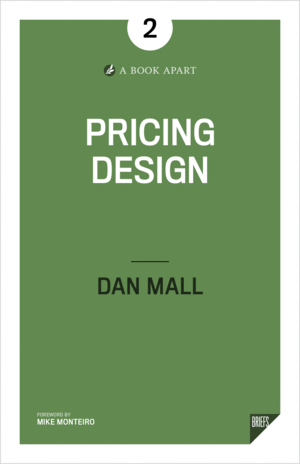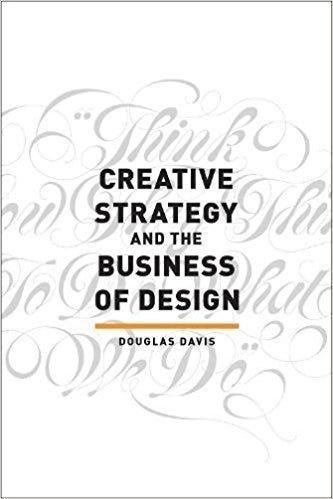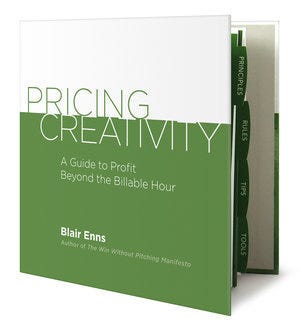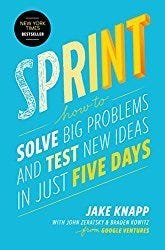I’m sure you have gotten the same question that I had when starting out as a freelance designer.
It’s one that is very innocent on the surface but starts the interaction with a misaligned value.
“How much do you charge to design something like this?”
See there are very few businesses that actually value design. What they value is achieving their goals and getting business results, with some widely unaware what good design (or any effort towards design at all) can do for their business.
The proper positioning of yourself and your business can allow people like us to do the best work we’ve ever done, work that is the best solution for the client, all while getting paid handsomely to do so.
I don’t claim to have this down entirely, as this is the pricing model which I am switching to for So Magnetic, my brand identity design business. And by all means, if you are actively practicing Value-Based design, I would love to spend some time talking about it with you;especially if there is more to add to this conversation here today.
As work inquiries come in, and I’m able to practice what I have learned so far, I’m starting to narrow down exactly how to leverage focusing your client on the expected return on investment vs. the cost expense of projects.
So what is value pricing?
Value pricing is something that I believe is the fairest way to receive compensation for the services you provide for your clients.
When I mentioned pricing models on the newsletter a week ago, I glossed over how people choose to structure their billing. These categories can be very over-generalized into three categories.
1 — Those who charge based on hours worked
This is an “easy” calculation for most people, especially for those who have done employed work for most of their life.
These are designers, developers, and marketers who keep track of how long they’ve worked on the project.
Client work that is based on hourly pricing has it’s ups and downs.
You know what your rate is. The more you work, the more you make. You have the power to continue to incrementally increase your rate as you get better.
The downside? Your hourly rate doesn’t grow as you do. You’ll find that you hit a market-level income ceiling several times. Everyone competes on their hourly rate. The client wants you to finish work as soon as possible. Every hour you take to finish the work is seen as an expense by the client.
2 — Those who charge flat fees on their projects
Charging a flat fee gives a better view of what it will “cost” to work with the creative.
Their flat fees are usually consistently priced and includes services that the designer knows the right time-frames for. This level of predictability gives a designer a good idea on what they will make if they keep their calendars full.
These designers are also incentivized to do work as quickly as possible to maximize profit. They are based a lot on the cost of materials, estimated hours worked, and a threshold or base-cost of doing their business. The profit here is in the margin of price minus cost and how quickly this work can be completed.
Clients rarely keep things within scope. Unless you are really good at being a consultant and eliminate any changes in scope, clients are incentivized by keeping things at the budget line. If something busts the budget, which they often can, clients don’t want to be charged extra to get their project finished.
These prices are often arbitrary and can break the model if clients start asking what they are paying for, the client extends the scope of the work, any hiccups in the development stage of the projects, and can often really stress your profit margins.
3 — Those who are paid on a commission of value generated
These designers focus on delivering the client the most value possible. The more that you can help the clientgain in profit, in gaining better metrics, in avoiding risk, eliminating costs, whatever their goals are, the better you are paid.
Clients are then also incentivized hire the right creative team that is the best investment in their business. They also are incentivized to consult designer on their goals in order to set the right game plan to help them achieve their goals.
These models of business are all for similar work but are focused on different goals.
Hourly goals:
Client— Finish the work quickly to minimize expense
Designer— Either to max out your schedule and always be working or take time for quality on each project
Flat-Fee goals:
Client— Spend time getting the most work for the best priced services
Designer— Finish work quickly and within scope to maximize profits
Value-Based goals:
Client— Investing in the right team that will help them reach their business goals, minimize risk, and deliver the most value
Designer— Deliver the most value to the client through focusing on achieving their goals and delivering the right solution
There is an abundance of work being done within the first two business models. It is the traditional business way for them to go to someone, pay them to do the job, and get a widget they can use for their business in the end.
For value pricing to have its weight in the ring, you have to be able to (and willing to) partner in your client’s success. Meaning that it has also to be a change of mindset for both you and your client on how things are done.
I’ve gathered the resources I’ve used which are available at the end to help you move forward in learning more about this, but let me cover what I know.
The nuts and bolts of Value-Based Pricing
Some notes about what I’ve learned
You’re not going to get the value conversations down without actually practicing these conversations out loud with other people. Preferably with real-life clients.
You need to be exposed to the types of conversations that people are having about business using business terms.
You need exposure to what metrics and values are being measured, and how that impacts their business if they aren’t met.
You need to have the client uncover what this work is worth to them, not you telling them what it’s worth.
You need a client that is open to talking about their goals outside of the design and working to achieve a better business as a result.
You need to be speaking to the decision makers of the business, whether that’s the owners, shareholders, boardroom, and executives.
The best test of how well you understand value is to test value-based pricing out in the real world.
If you’ve been following my writing a while, you know that creating value is a big topic for a lot of the Compass of Design Publication.
If you go through any of the resources that I’ve posted below, you’ll start to see exactly where these things are starting to click in my head, allowing me to effectively talk about these things with my future clients.
So in order for value pricing to work, you need to reach three milestones with your clients.
1. Paint the ideal future state
Early in 2016 when I had barely gotten started as a designer, I met my friend Justin Jackson, who was focused on “building 100 things in a year” through his MegaMaker brand.
Th was a crazy enough goal (having to average one full-fledged thing delivered every 3.5 days) that I was interested in following to see what played out.
From there, I’ve gotten to talk to Justin a lot over the last two years and have even hired him for coaching in my business.
I swear that we all teach topics that we ourselves are trying to understand better because I know Justin has this part pretty figured out on delivering things that help his clients achieve where they want to be.
You see, your customers have a reason for wanting to achieve the things that they do. Everyone does. They don’t come to you because they want a sexy new website design. They don’t really come over because they want to have cool new logos, menus, and better-looking point of sale screens.
The client has a valid reason they are coming to you, and you specifically.
Try to pick this apart.
A client wants what your service helps them get in the future and what it means to them and their business.
This point is mainly focused on what goals they have, where they want to be, and how important or prioritized are these goals.
2. Get the metrics that we are using to reach that state
e.g., “How will we know when we get there?”
I always love answering these sections with lists. Here’s a list of questions that help you think about what we’re measuring.
These are questions that I’ve asked which help me get an idea of just how crucial what I’m doing for the clients are.
Who are the stakeholders that are driving this project?
What are we measuring?
What does the success of the project look like here?
How many other teams are working here after the success of this project?
What key driving metrics can we use to measure the effectiveness of this project?
What does it look like if the project were to fail?
Who or what is at stake should this project not perform as expected?
What is (or have they figured out) the projected growth in new business?
What is the current cost per customer acquisition?
Are there other areas of the business that are working on the same or similar goals?
How long will this project remain in effect after completion?
How does changing things with this project affect the other parts of your business?
Each one of these questions are just examples of what you could and probably should ask in the strategy session before doing deliverables.
This is something that you can find more about in the resources below for sure.
3. Assign Monetary Value
It is very imperative that you let the client put the numbers on it
If you guide the numbers at all at this stage, you then rob the client of determining just how valuable this project is to them.
Sean McCabe’s course that he made for seanwes on pricing clients on valuefocuses a lot on this, which you’ll see echoed throughout the resources below.
The idea here is that you need to learn exactly what value someone gets from the answers above.
If the client’s goal is to create an automation that brings their total workload from 40 hours a week to 20 hours a week, that 20 hours saved should have some sort of value to the client.
Is it worth it to them for the whole value of their salary? Is it worth at least half? Your client has to uncover this value themselves through your process and consultation with them.
From Douglas Davis’s book Creative Strategy and the Business of Design, he mentions that values
… at their core, are emotional. And emotions activate behavior. Values have worth. Values go far beyond usefulness to have emotional meaning. They are different for every person, so values are personal.
This fundamentally changes pricing because what we provide, even if it’s the same exact thing from Client 1 to Client 2, is valued differently by each person.
What our goal is, is to help the client uncover the value of the design.
We got to ask them:
“How much is it worth it to you for you to: reach this goal/ hit this metric/ be able to deliver this work with less effort etc.”
Whatever they gave you for answers, use that to help you uncover how much this is worth to the client.
Watch the video in the resources below between Chris Do and Ran Segall about how they come up with the value in their realtime conversation. Literally everything I’m trying to explain here is enacted right there.
Where value pricing breaks down
Many times when you’re working with clients, you know some of the pitfalls of the discovery conversations. However, with value pricing, you will find yourself running into all sorts of new obstacles that, if not practiced or prepared properly, will derail the whole conversation.
If you’re trying to qualify a client who is not properly fit for the model of value-based pricing
If you’re trying to guide the client with values coming from your mouth instead of theirs
If you try to skip parts of the discovery process
If you can’t back up your propositions with confidence
If you don’t understand the value created for their line of business
If a client isn’t open to revealing their goals or bringing you in to help achieve them
If a client is more interested in the cost than the value created
If you start to try justifying the price based off of time or arbitrary valuations
If you’re overvaluing how much the work will help the business (e.g. you still haven’t gotten what the goals and expectations are from the client)
There are many more, and as I continue to practice value based pricing, you’ll see more content come out how to handle these as I get past them.
What have I been using to learn about value-based pricing?
So if you want to learn what I have learned, there are a few places that have been helping me change the mindset of pricing my design and positioning where design sits in other people’s businesses.
From the Compass of Design Publication
I’ve spent all of last year writing and curating design articles that have led me to the point where I am at in the time of this writing.
Below is the list of the best links that kind of explain what my thinking is and why I feel it’s important to value the work we do as designers. (also there’s an article in here from Juliane Bone, a friend of mine inside of our community group.
Understanding why people chose Starbucks as their branded hangout place
An overview of what design strategy is
How to politely decline working with clients who don’t value design
Positioning yourself as a professional designer
Jobs to be Done. (JTBD)
Jobs to be done is the framework of thinking that helps you determine what a client’s bigger goal is. Though they come to you to do some work for them, they don’t really want what that thing, they want to achieve something better and your work is a tool to help them get it.
Go over these videos and article to understand more about the things that drive people to hire your services.
What is your customer, boss, client’s dream of a better life?
That whole talk Justin has with Alan Klement on JTBD
And a third call if you still want some info on JTBD
Finding threats and opportunities with customers needs
Mastering the Value Conversation
I was watching a recent conversation that Chris Do from The Futur was having with Ran Segall where Ran was explaining what he wanted to do with his business, and Chris took the opportunity to treat him as if he were a client of his, having a nearly disguised, but flawless representation of Value Based Pricing.
These other videos from Chris Do’s The Futurhave been a good way to reframe the conversations and mindset on finding clients that value design.
How to find clients that Value Design — The Futur
Why you shouldn’t take on low paying work — The Futur
If you see that I’m sharing quite a few links from them, it’s because what they share is quite in line with what I’ve been learning as well. These videos from them kind of inspire where I’ve searched for answers to value pricing.

Pricing Design — Dan Mall
Pricing Design, which was written by Dan Mall is definitely worth the heavy cash that you have to put up for it. It’s $8.
But this gives you a very good introduction to implementing Value Pricing if you have never thought much into your pricing models.
Understanding business
and how your design drives value and impacts business goals.

Creative Strategy and the business of design — Douglas Davis
One of the best books that I’ve read for understanding how design impacts business is this book by Douglas Davis, Creative Strategy and the Business of Design. Though it doesn’t cover pricing, it will cover the things that help you become a better consultant, and thus, being able to effectively implement value pricing.

101 things I learned in business school
One hundred and one business terms and concepts that have helped me be able to speak the same language that business execs speak. When you start to work with higher value clients, you need to be able to understand what they talk about during your meetings. If you want to see a bit inside, you can watch Chris Do’s review of 101 things I learned in business school
Creative Professionalism

The Win Without Pitching Manifesto — Blair Enns
Blair Enns who was on The Futur’s podcast to talk with Chris Do about the win without pitching book. This is a manifesto that goes over design professionalism and positioning within your creative business.

**Pricing Creativity— Blair Enns**
This book is Blair Enn’s culmination of working for years in the client service industry. If you were looking for the training book for how to price on value. This book will help you master the conversation and come to an effective system at pricing your designs.

Value Proposition Design— Alexander Osterwalder
Take what you know about designing products and services and pair that with what you need to learn about basing that work off of real world data. This is for helping you understand the patterns of great value propositions.

Sprint— by Jake Knapp and Google Ventures
Sprint, though not a book about pricing, shows you a system of design that works with higher level clients. This book has been really helpful at mastering the solving process in design. When you’re brought in to be a high value consultant, a lot of the ideas here will help you get more done and deliver more value to clients.
So I hope this has been helpful and I’m sure that you’ll have loads of questions. If you do at this point, why not leave a comment or check out our Compass of Design Community below.
Thanks,
Darian Rosebrook, Compass of Design

